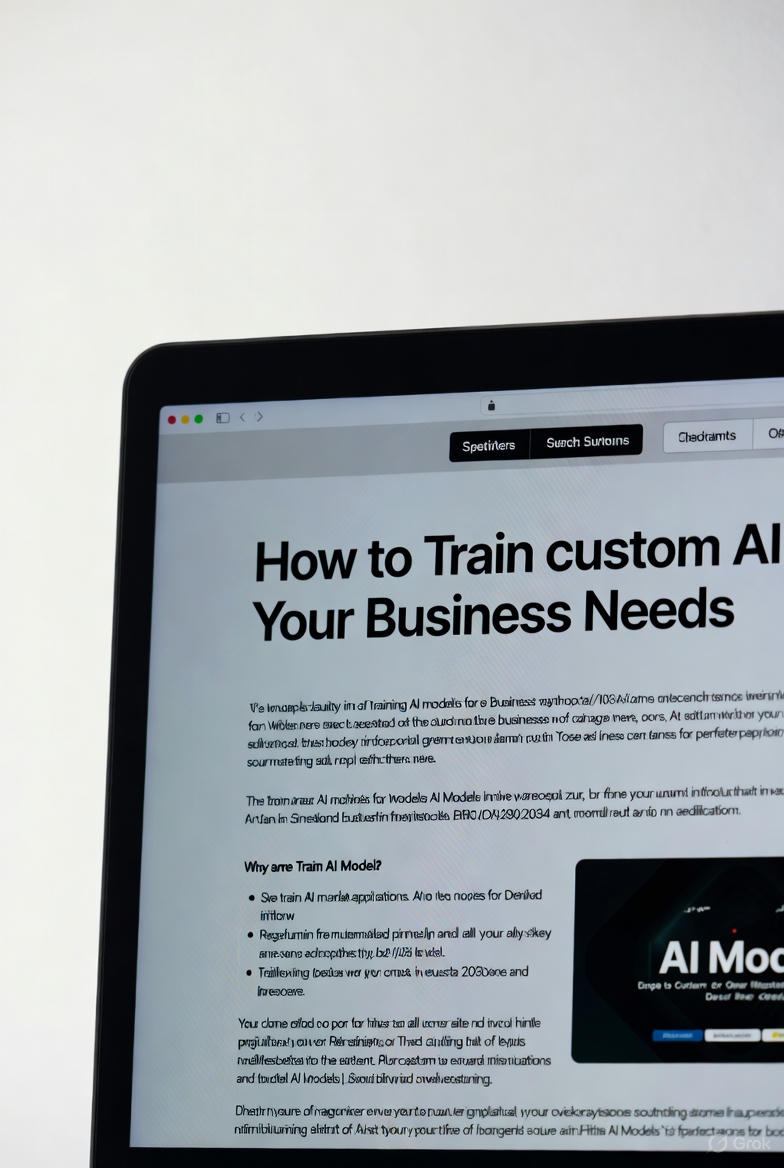In today’s rapidly evolving technological landscape, leveraging artificial intelligence (AI) can give businesses a significant competitive edge. One of the most potent strategies to achieve this is by training custom AI models tailored specifically to your business needs. This not only enhances efficiency but also drives innovation by automating routines and offering deep insights into market trends. In this blog post, we will explore the meticulous process of training custom AI models that cater to your business’s unique requirements.
Understanding the Importance of Custom AI Models
Before diving into the technicalities, it’s crucial to understand why custom AI models are pivotal for contemporary businesses. Unlike generic AI solutions, custom models are designed to address particular challenges and objectives specific to your business. This bespoke approach ensures that you harness the full potential of AI, optimizing your operational processes and decision-making capabilities.
Key Benefits of Custom AI Models
- Increased Accuracy: Tailored algorithms ensure higher precision tailored to specific tasks.
- Enhanced Efficiency: Automation of bespoke tasks can save time and resources.
- Competitive Advantage: Unique solutions offer market differentiation.
- Scalability: As your business grows, so can your AI systems, aligned with your evolving needs.
Steps to Train Custom AI Models
Training an AI model involves a series of deliberate steps that must be executed carefully to meet your business’s requirements. Here’s a detailed breakdown of the process:
1. Define Your Objectives
The first and foremost step is to clearly define what you aim to achieve with the AI model. Whether it’s predicting customer behavior, improving manufacturing processes, or enhancing customer service, having a clear goal is crucial. A well-defined objective will guide the entire training and deployment process.
2. Data Collection and Preparation
Data is the cornerstone of any AI system. Collecting and preparing relevant data is essential for training an effective AI model. Consider using the following strategies:
- Internal Data Sources: Use existing company databases and logs.
- External Data Sources: Supplement with market data, public datasets, or third-party providers.
- Data Cleaning: Ensure the data is clean and organized, free from redundancies and inaccuracies.
3. Choosing the Right AI Algorithm
Depending on the defined objectives, select an appropriate AI algorithm that suits your business needs. There are various types, such as supervised learning, unsupervised learning, and reinforcement learning. Consulting with AI specialists may help in selecting the optimal algorithm for your situation.
4. Model Training and Testing
Training the model involves running your data through the chosen algorithm to recognize patterns and develop predictive capabilities. Split your dataset into training and testing sets to evaluate the model’s performance and make necessary adjustments.
It’s important to use iterative testing and fine-tuning for the model to achieve the desired accuracy and efficiency. Techniques like cross-validation and hyperparameter tuning can optimize performance.
5. Model Deployment and Integration
Once the model is trained and tested, it is time to deploy it within your business environment. Ensure that it seamlessly integrates with existing systems and provides actionable insights to relevant teams. Continuous monitoring and iteration post-deployment are crucial to maintain and improve model performance over time.
Challenges and Considerations
While developing custom AI models offers vast benefits, several challenges must be addressed:
Data Privacy and Security
Ensure that data handling complies with regulations like GDPR or CCPA. Secure data infrastructure minimizes risks associated with data breaches.
Resource Allocation
AI projects can be resource-intensive, requiring financial investment and technical expertise. Planning is key to managing budgets and resources effectively.
Bias and Fairness
Strive to eliminate biases in data to ensure the model does not produce skewed outcomes. Regular audits and bias detection mechanisms can help maintain fairness.
Conclusion
Training custom AI models can be transformative for businesses, propelling them toward innovation and efficiency. By carefully designing, training, and implementing these models, companies can enjoy unparalleled data-driven insights and operational advantages. As AI technology continues to evolve, investing in custom solutions tailored to specific business needs will be pivotal in maintaining a competitive edge.
As you embark on this AI journey, ensure that the focus remains on defining clear objectives, sourcing quality data, and continuously optimizing your models to maximize their potential. With the right approach, custom AI models can revolutionize your business operations, leading to sustained success and growth.

